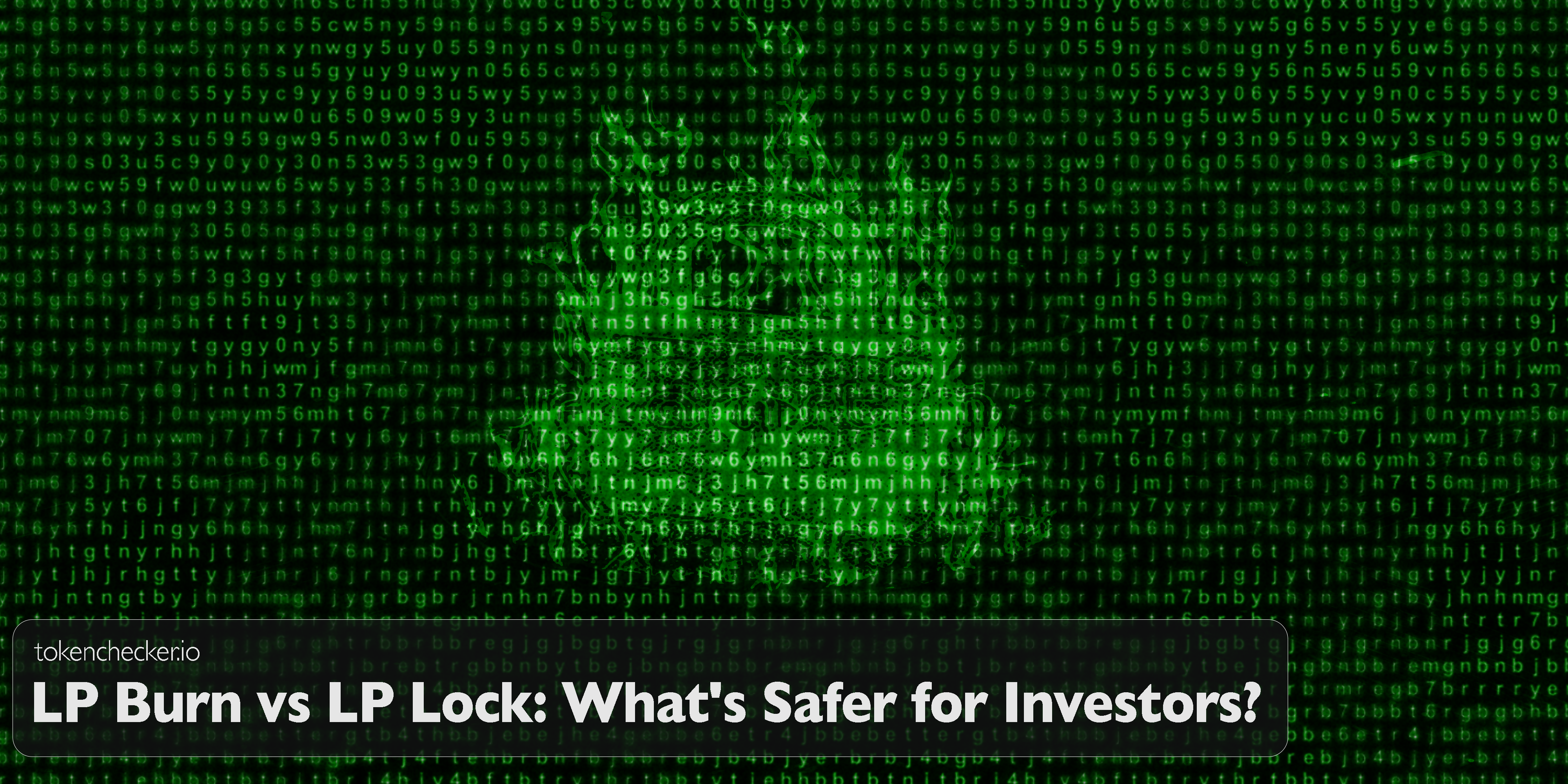
LP Burn vs LP Lock: What's Safer for Investors?
Introduction
Rug pulls aren’t just about intent they’re also about access. And how a project manages its liquidity says a lot about how seriously it takes your trust.
Two terms come up a lot in DeFi: LP Burn and LP Lock. They sound similar. They both aim to prevent developers from yanking the liquidity and running. But underneath, they’re very different.
One destroys control entirely. The other delays it. And which one a project chooses says a lot about their long-term thinking (or lack of it).
Let’s break down the key differences and what they really mean for your money.
What Are LP Tokens?
When you add funds to a liquidity pool, you get LP (liquidity provider) tokens in return. These represent your share of the pool and are needed if you ever want to withdraw your funds.
Projects also get LP tokens when they seed initial liquidity. What they do with those tokens determines how safe the pool is.
LP Burn: The Permanent Approach
Burning LP tokens means sending them to a dead wallet forever. No one, not even the devs, can access them again.
This is often done to signal commitment. If the devs can’t touch the LP tokens, they can’t pull the liquidity, right?
Yes but there’s a catch.
Once those tokens are gone, the project can never migrate liquidity to a better DEX, adjust strategy, or expand to other chains. It's a one-way street. And sometimes, bad actors fake the burn entirely by sending the LP tokens to a wallet they still control.
That means LP burn can be real security or just a PR stunt.
LP Lock: The Flexible (and Safer) Standard
Locking LP tokens means sending them to a time-locked smart contract. The tokens are frozen for a set period and can’t be withdrawn until that time is up.
This prevents rug pulls, but still allows the project to recover those LP tokens later for upgrades, migrations, or reallocation.
Most trusted projects use third-party services like Team Finance or TrustSwap to lock their LP tokens. These platforms make the lock duration public and verifiable.
So instead of throwing away the key, LP locking is like putting the key in a safe and setting a timer.
Why LP Locking Is the Better Signal
- Transparency: Everyone can verify how long liquidity is locked.
- Strategic Flexibility: After the lock expires, liquidity can be moved, upgraded, or adapted.
- Security: No one can access the funds early not even the devs.
While LP burning seems bold, it often hides a lack of planning. And in some cases, it’s used to fool investors.
Common Myths About LP Burning
"Burning LP tokens means the token is safe."
Not necessarily. If the burn was fake or done from a small liquidity pool, it's meaningless. The fact that locked liquidity doesn't guarantee safety applies here too.
"It boosts price through scarcity."
Theoretically, yes but only if the project is growing and demand increases. If not, the price drops anyway, burn or not.
"It’s more honest than locking."
It’s more permanent, but not necessarily more honest. Locking with transparency and audits is a far better trust signal.
How tokenchecker.io Helps
tokenchecker.io lets you:
- See if LP tokens are locked or burned
- Verify lock duration and platforms used
- Detect fake burns or sketchy locking practices
- Flag tokens with no liquidity safeguards
This matters. A project with no LP lock, no burn, and full access to the liquidity is a rug pull waiting to happen.
Final Thoughts
Burning LP tokens might sound hardcore but it often creates more problems than it solves. It locks the project out of future upgrades and can’t be reversed.
Locking LP tokens is the smarter move. It provides real, auditable security while keeping doors open for growth and evolution.
Before you invest, check the LP status. If the liquidity is neither locked nor burned, your money’s at risk. And even then, make sure the lock is real.
tokenchecker.io gives you all the details before you risk your funds.
Because trust shouldn’t just be a marketing term. It should be on-chain.